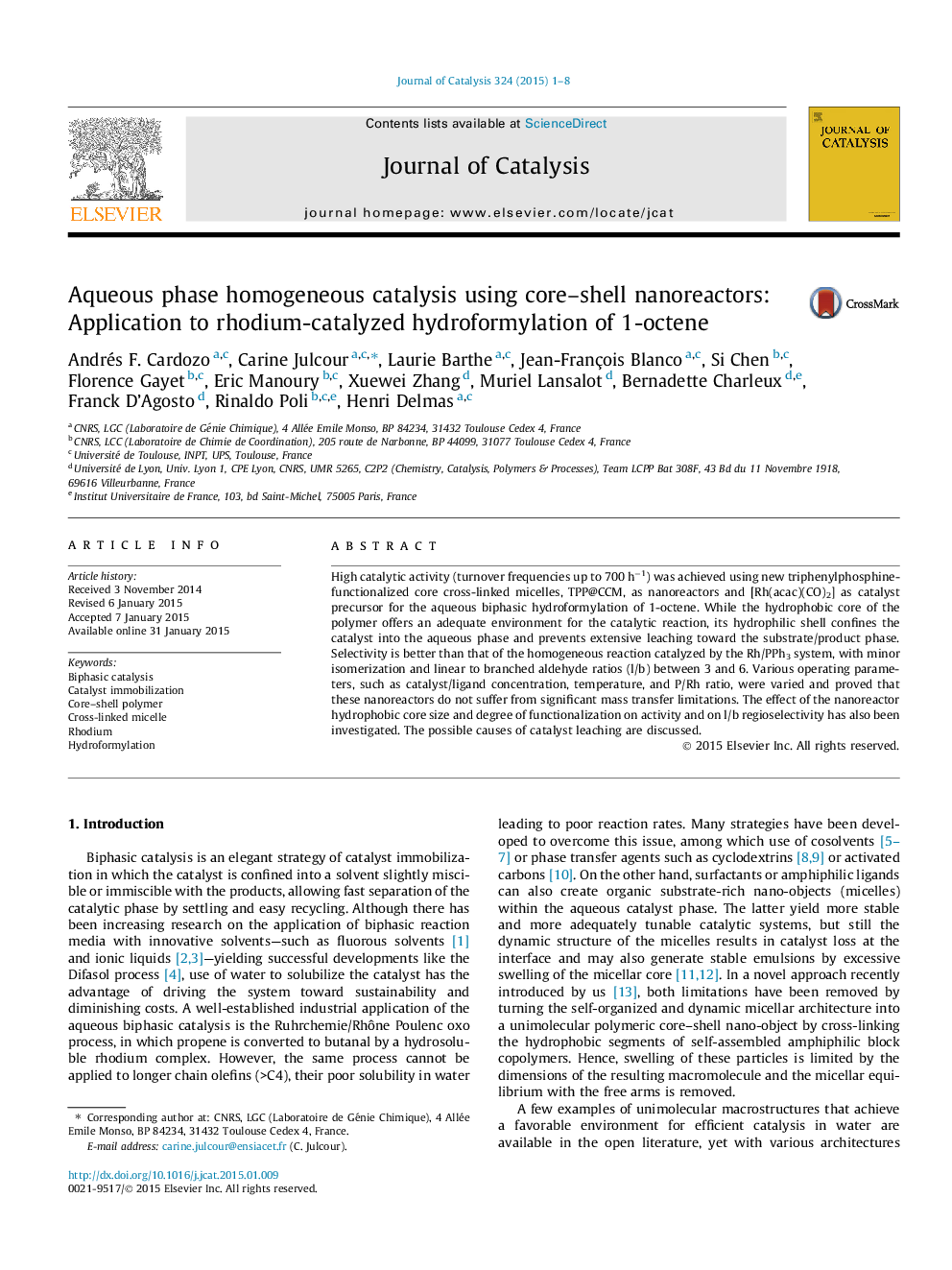| Article ID | Journal | Published Year | Pages | File Type |
|---|---|---|---|---|
| 60903 | Journal of Catalysis | 2015 | 8 Pages |
•Unimolecular core–shell nanoreactors prepared by RAFT emulsion polymerization.•High turnover frequency (TOF) for aqueous biphasic 1-octene hydroformylation.•Excellent catalyst recycling and low rhodium leaching.•Higher TOF for lower phosphine density within the polymer.•Rhodium leaching caused by polymer transport to the organic phase.
High catalytic activity (turnover frequencies up to 700 h−1) was achieved using new triphenylphosphine-functionalized core cross-linked micelles, TPP@CCM, as nanoreactors and [Rh(acac)(CO)2] as catalyst precursor for the aqueous biphasic hydroformylation of 1-octene. While the hydrophobic core of the polymer offers an adequate environment for the catalytic reaction, its hydrophilic shell confines the catalyst into the aqueous phase and prevents extensive leaching toward the substrate/product phase. Selectivity is better than that of the homogeneous reaction catalyzed by the Rh/PPh3 system, with minor isomerization and linear to branched aldehyde ratios (l/b) between 3 and 6. Various operating parameters, such as catalyst/ligand concentration, temperature, and P/Rh ratio, were varied and proved that these nanoreactors do not suffer from significant mass transfer limitations. The effect of the nanoreactor hydrophobic core size and degree of functionalization on activity and on l/b regioselectivity has also been investigated. The possible causes of catalyst leaching are discussed.
Graphical abstractFigure optionsDownload full-size imageDownload high-quality image (236 K)Download as PowerPoint slide
